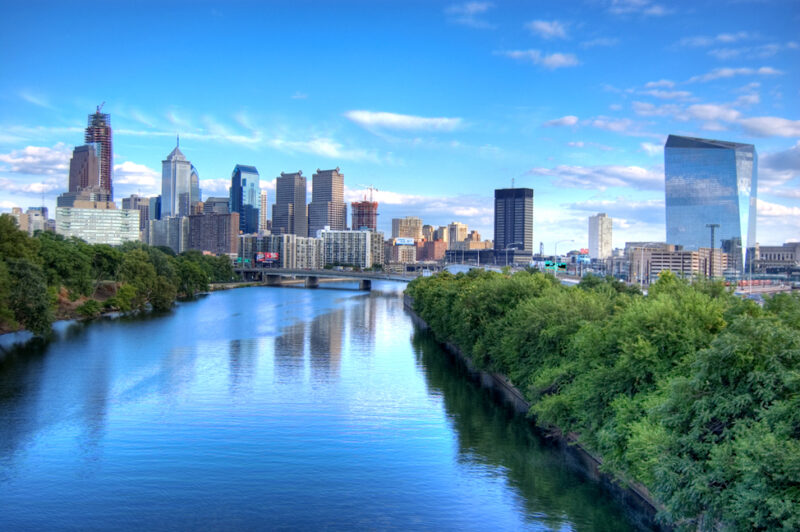The Schuylkill River is a natural wonder that flows through the heart of Pennsylvania, connecting the mountains, valleys, forests, and cities of the Keystone State. The river has a rich history, a diverse ecology, and a vital role in the development of the region.
But where does this remarkable river begin? How does it travel from its source to its mouth, and what are some of the attractions and activities that you can enjoy along the way?
In this blog post, we will explore the origins and the splendor of the Schuylkill River, and give you some tips on how to experience its beauty and culture.
The Source
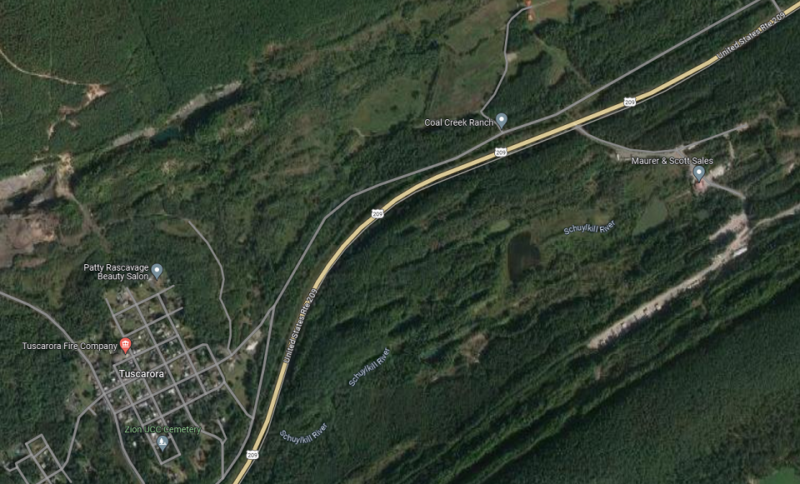
The Schuylkill River has two main branches: the East Branch and the West Branch. The East Branch originates in the heavily mined land of the southcentral Pennsylvania Coal Region, near the village of Tuscarora in Schuylkill County.
The West Branch starts in the town of Minersville, also in Schuylkill County. The two branches converge at the borough of Schuylkill Haven, forming the main stem of the Schuylkill River.
The name Schuylkill comes from the Dutch word “Schuylkill”, meaning “hidden or skulking creek”. The Dutch explorers who first encountered the river in the 17th century gave it this name because of its winding course and its hidden tributaries.
The Native Americans who inhabited the area before the Europeans called the river “Manaiunk”, meaning “where we go to drink” or “river of the big fish”.
The Journey
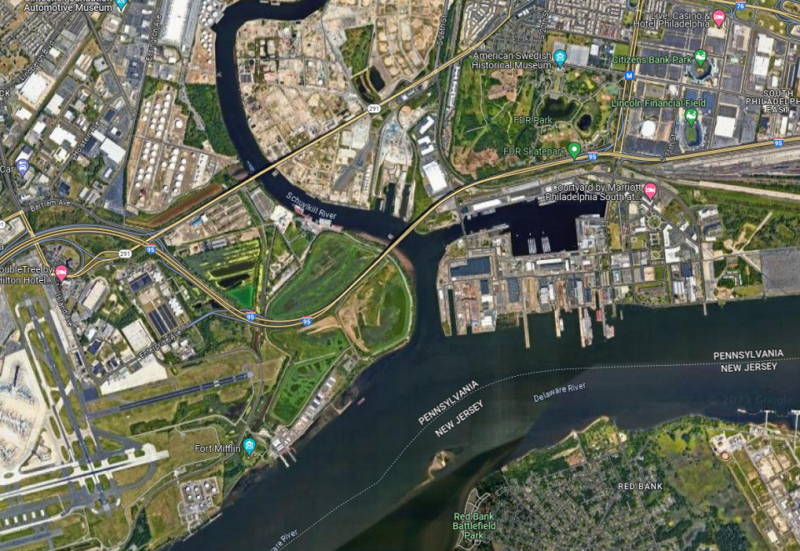
From its source, the Schuylkill River flows southeast for about 135 miles (217 km) until it reaches its mouth at the Delaware River in Philadelphia. Along the way, it passes through various landscapes, towns, and cities, offering a variety of scenery and activities for visitors and locals alike.
Here are some of the highlights of the Schuylkill River’s journey.
Reading
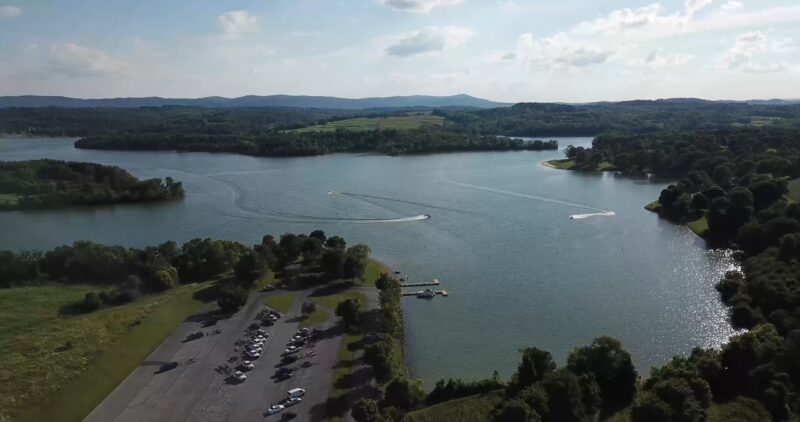
Situated on the Schuylkill River, Reading holds the title of the largest city in Berks County and serves as its county seat. Established in 1748 by the sons of William Penn, it evolved into a significant hub for industry and transportation during the 19th and 20th centuries.
Famous for its historical sites, Reading boasts the iconic Reading Railroad, the distinctive Pagoda, and the esteemed Reading Public Museum. The city also offers numerous green spaces and pathways by the river, including the Schuylkill River Trail, Thun Trail, and Neversink Mountain Preserve.
Pottstown
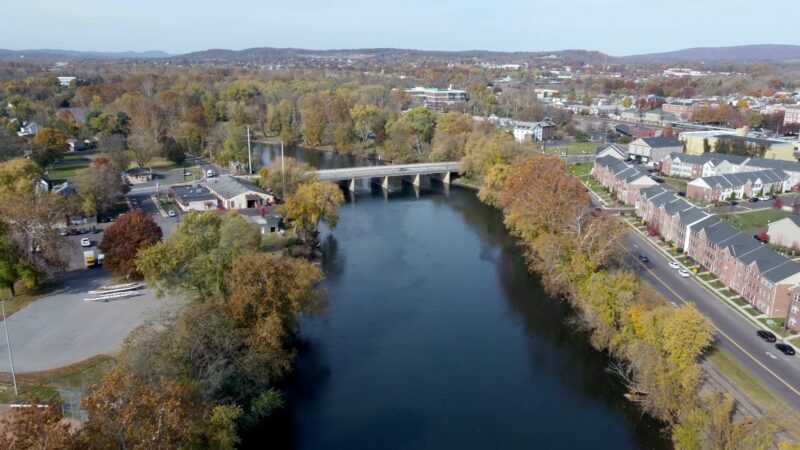
Nestled in Montgomery County, Pottstown lies approximately 40 miles (64 km) northwest of Philadelphia. Founded in 1752 by the notable ironmaster John Potts, it is the birthplace of Pottsgrove Manor.
Historically, Pottstown flourished in industries like iron, steel, textiles, and glassware. Presently, it’s a quaint community featuring a historic downtown, a lively arts and culture scene, and a picturesque riverfront park.
Pottstown also serves as the base for the Schuylkill River Greenways National Heritage Area, an organization dedicated to the river’s conservation and the enhancement of its neighboring areas.
Valley Forge
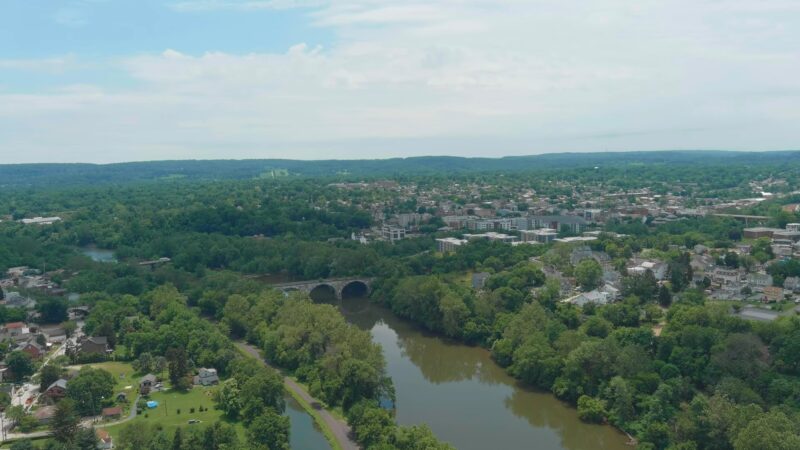
Valley Forge, a national historical park in Chester County, memorializes the Continental Army’s winter encampment of 1777-1778 during the American Revolutionary War. Led by General George Washington, the troops faced severe hardships, scarcity of provisions, and illness, yet they honed their skills and boosted their spirit.
Valley Forge stands as a testament to the endurance and sacrifices of the American revolutionaries, offering insights into the war’s history and impact. The park provides picturesque river vistas, trails for hiking and biking, and opportunities for observing wildlife.
Philadelphia
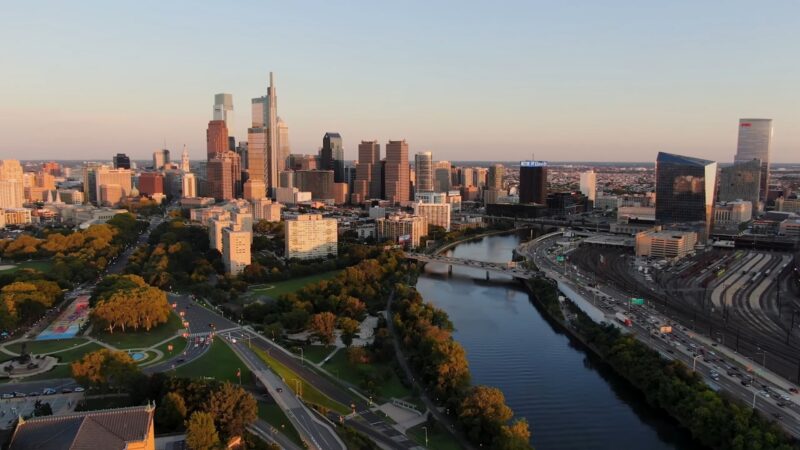
Philadelphia, the most populous city on the Schuylkill River and the United States’ sixth-largest city was founded in 1682 by William Penn. It holds the distinction of being the United States’ initial capital and the cradle of the Declaration of Independence and the Constitution.
In Literature
The source of the Schuylkill River, where the East and West Branches meet at Schuylkill Haven, has been a subject of interest and imagination for some writers and poets who have explored the origins and meanings of the river and its name. Here are some examples of how the source of the Schuylkill River has been portrayed in literature:
The Schuylkill (1822)
In the poem The Schuylkill (1822), Lydia Huntley Sigourney (1791-1865) traces the river’s journey from its source to its mouth and praises its natural beauty and historical significance. She writes:
“From mountain springs thy waters flow,
And drink the sunbeam’s earliest glow;
Through cultured vales, and woodlands wild,
Thou rollest on, a favored child;
And many a flower, and many a gem,
Are sparkling in thy diadem”
The Valley of Decision
In the novel The Valley of Decision (1942), Marcia Davenport (1903-1996) tells the story of the Scott family, who owned and operated an ironworks in the Schuylkill Valley from the late 18th century to the early 20th century. She describes the river’s source as a place of mystery, where the Scotts first discover the iron ore that will make their fortune.
She writes:
“The Schuylkill rose in two branches, the East and the West, which joined at Schuylkill Haven. The West Branch was the shorter and the swifter, and it was there, in the hills above Minersville, that William Scott had found his iron”.
Schuylkill (1998)
In the poem Schuylkill (1998), Leonard Kress (1950-) reflects on the river’s name and its hidden nature, and imagines the thoughts and feelings of the Dutch explorer who first named it. He writes:
“He must have thought he’d found the source
of all that’s hidden, dark, and hoarse,
the throaty rumble beneath the earth,
the spring, the fountain, the place of birth.
/ … /
He named it Schuylkill—hidden creek—
and wondered what else it might speak”.
FAQ
What geological features characterize the source areas of the river?
The source areas of the Schuylkill River, particularly near Tuscarora and Minersville, are characterized by rugged terrain and coal-rich landscapes, reflecting the region’s historical significance in the coal mining industry.
How do the East and West Branches of the Schuylkill River differ in their origins?
The East Branch originates in a region heavily influenced by coal mining, while the West Branch begins in a more urban setting. This contrast highlights the diverse environmental and industrial histories that converge in the river’s journey.
Are there any environmental concerns related to the river’s source regions?
Yes, the source regions, especially the coal mining areas, have faced environmental challenges such as acid mine drainage, which impacts water quality and aquatic life in the river.
How has the history of coal mining in the source areas affected the river?
Coal mining has left a legacy of pollution and altered landscapes, affecting the river’s ecosystem. Efforts are ongoing to mitigate these impacts and restore the river’s health.
What role do the source towns play in the overall health of the river?
The source towns, including Tuscarora and Minersville, play a crucial role in the river’s health, as actions taken here, such as pollution control and land management, directly affect the river’s downstream quality.
Is there any cultural or historical significance attached to the river’s source areas?
Yes, the source areas are rich in cultural and historical significance, reflecting the region’s coal mining heritage and its impact on the development of Pennsylvania’s industrial landscape.
Final Words
The Schuylkill River is more than just a body of water. It embodies a vibrant ecosystem, a fountainhead of leisure and creativity, and a bridge linking history to the contemporary world.
Inhabited by diverse wildlife including fish, birds, mammals, reptiles, and amphibians, some of which are unique or at risk, the river offers a haven for nature enthusiasts. It presents a myriad of outdoor pursuits like boating, fishing, swimming, kayaking, canoeing, tubing, and rafting.
Moreover, the river fuels the imagination of artists, authors, musicians, and poets, who encapsulate its essence and allure in their creations. The Schuylkill River stands as a gem warranting our admiration and safeguarding. It intertwines with our heritage, culture, and collective identity.
This river forges a bond with nature, our community, and our inner selves. Emerging from modest origins, it courses elegantly and magnificently. It’s a river that invites us all to relish and value its presence.
